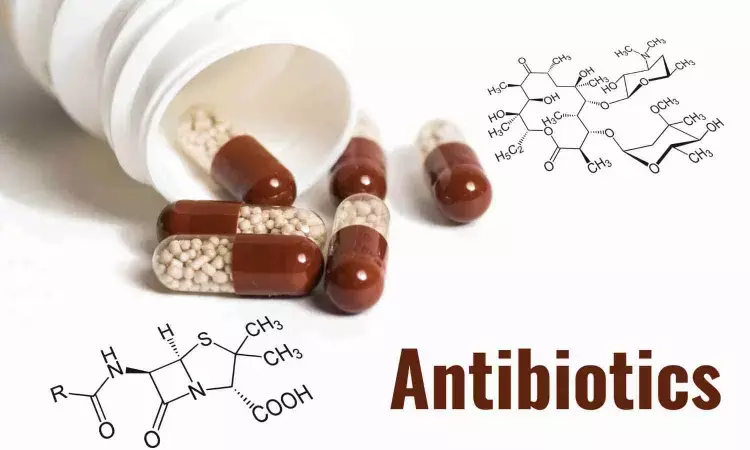- Home
- Medical news & Guidelines
- Anesthesiology
- Cardiology and CTVS
- Critical Care
- Dentistry
- Dermatology
- Diabetes and Endocrinology
- ENT
- Gastroenterology
- Medicine
- Nephrology
- Neurology
- Obstretics-Gynaecology
- Oncology
- Ophthalmology
- Orthopaedics
- Pediatrics-Neonatology
- Psychiatry
- Pulmonology
- Radiology
- Surgery
- Urology
- Laboratory Medicine
- Diet
- Nursing
- Paramedical
- Physiotherapy
- Health news
- Fact Check
- Bone Health Fact Check
- Brain Health Fact Check
- Cancer Related Fact Check
- Child Care Fact Check
- Dental and oral health fact check
- Diabetes and metabolic health fact check
- Diet and Nutrition Fact Check
- Eye and ENT Care Fact Check
- Fitness fact check
- Gut health fact check
- Heart health fact check
- Kidney health fact check
- Medical education fact check
- Men's health fact check
- Respiratory fact check
- Skin and hair care fact check
- Vaccine and Immunization fact check
- Women's health fact check
- AYUSH
- State News
- Andaman and Nicobar Islands
- Andhra Pradesh
- Arunachal Pradesh
- Assam
- Bihar
- Chandigarh
- Chattisgarh
- Dadra and Nagar Haveli
- Daman and Diu
- Delhi
- Goa
- Gujarat
- Haryana
- Himachal Pradesh
- Jammu & Kashmir
- Jharkhand
- Karnataka
- Kerala
- Ladakh
- Lakshadweep
- Madhya Pradesh
- Maharashtra
- Manipur
- Meghalaya
- Mizoram
- Nagaland
- Odisha
- Puducherry
- Punjab
- Rajasthan
- Sikkim
- Tamil Nadu
- Telangana
- Tripura
- Uttar Pradesh
- Uttrakhand
- West Bengal
- Medical Education
- Industry
Prophylactic Antibiotics Reduce SSI Only in Open Pyloromyotomy Cases, suggests study

Researchers identified that the routine use of prophylactic antibiotics in infants who are having pyloromyotomy might not always prevent surgical site infections (SSI) but could reduce infection incidence significantly in those that have open surgical repair. The study was published in the journal of Annals of Surgery by Kerri A. and colleagues.
To explain these variations in practice, data from 6,093 infants who had pyloromyotomy between January 2021 and December 2023 at 148 hospitals in the NSQIP-Pediatric program were analyzed. The researchers contrasted outcomes among patients who received prophylactic antibiotics with those who did not, using patient-level propensity matching and mixed-effects models.
The study team utilized a strong multicenter design to facilitate generalizability of findings. Propensity-matched comparisons that controlled for patient factors and hospital clusters were utilized to contrast infection outcomes. The study also had a hospital-level analysis to examine if institutional rates of prophylaxis were related to better SSI rates. Subgroup analyses were performed to explore separately infants that received laparoscopic versus open pyloromyotomy and to give a detailed insight regarding surgical approach effect on outcomes.
Key Findings
• The cohort of 6,093 infants had 46.6% who were given prophylactic antibiotics.
• Of the matched cohorts (2,591 per group), SSI was found in 1.6% (38 infants) of the no-prophylaxis group and 1.1% (28 infants) in the prophylaxis group (adjusted odds ratio [aOR]: 0.61; 95% CI: 0.37–1.01), hinting at a lack of overall statistically significant benefit.
• Institutional usage of antibiotics wasn't associated with decreased SSI rates (Spearman ρ = 0.11, P = 0.13), which means that increased prophylaxis use at the hospital level didn't result in improved outcomes.
Laparoscopic pyloromyotomy subgroup:
• SSI rate: 1.1% both in prophylaxis and non-prophylaxis groups, OR: 0.96 (95% CI: 0.55–1.69), which means no benefit from prophylaxis
Open pyloromyotomy subgroup:
• SSI rate: 5.1% in no-prophylaxis group vs 1.9% in prophylaxis group, OR: 0.36 (95% CI: 0.14–0.93), demonstrating marked reduction in infections with antibiotics
This multicenter analysis offers important information regarding the efficacy of antibiotic prophylaxis in infant pyloromyotomy. These results warrant a selective approach to prophylaxis, reserving antibiotics for more susceptible open cases over a broad blanket application for all patients. This individualized approach may enhance outcomes with less unnecessary antibiotic use in infants.
Reference:
McKie KA, Moturu A, Graham DA, Coleman M, Huang R, Grant C, Saito JM, Hall BL, Cina RA, Newland JG, Ko C, Rangel SJ. Prophylactic Antibiotic use and Outcomes in Infants Undergoing Pyloromyotomy: A Multicenter Propensity Matched Cohort Analysis. Ann Surg. 2025 Jun 20. doi: 10.1097/SLA.0000000000006806. Epub ahead of print. PMID: 40539274.
Dr Riya Dave has completed dentistry from Gujarat University in 2022. She is a dentist and accomplished medical and scientific writer known for her commitment to bridging the gap between clinical expertise and accessible healthcare information. She has been actively involved in writing blogs related to health and wellness.
Dr Kamal Kant Kohli-MBBS, DTCD- a chest specialist with more than 30 years of practice and a flair for writing clinical articles, Dr Kamal Kant Kohli joined Medical Dialogues as a Chief Editor of Medical News. Besides writing articles, as an editor, he proofreads and verifies all the medical content published on Medical Dialogues including those coming from journals, studies,medical conferences,guidelines etc. Email: drkohli@medicaldialogues.in. Contact no. 011-43720751


